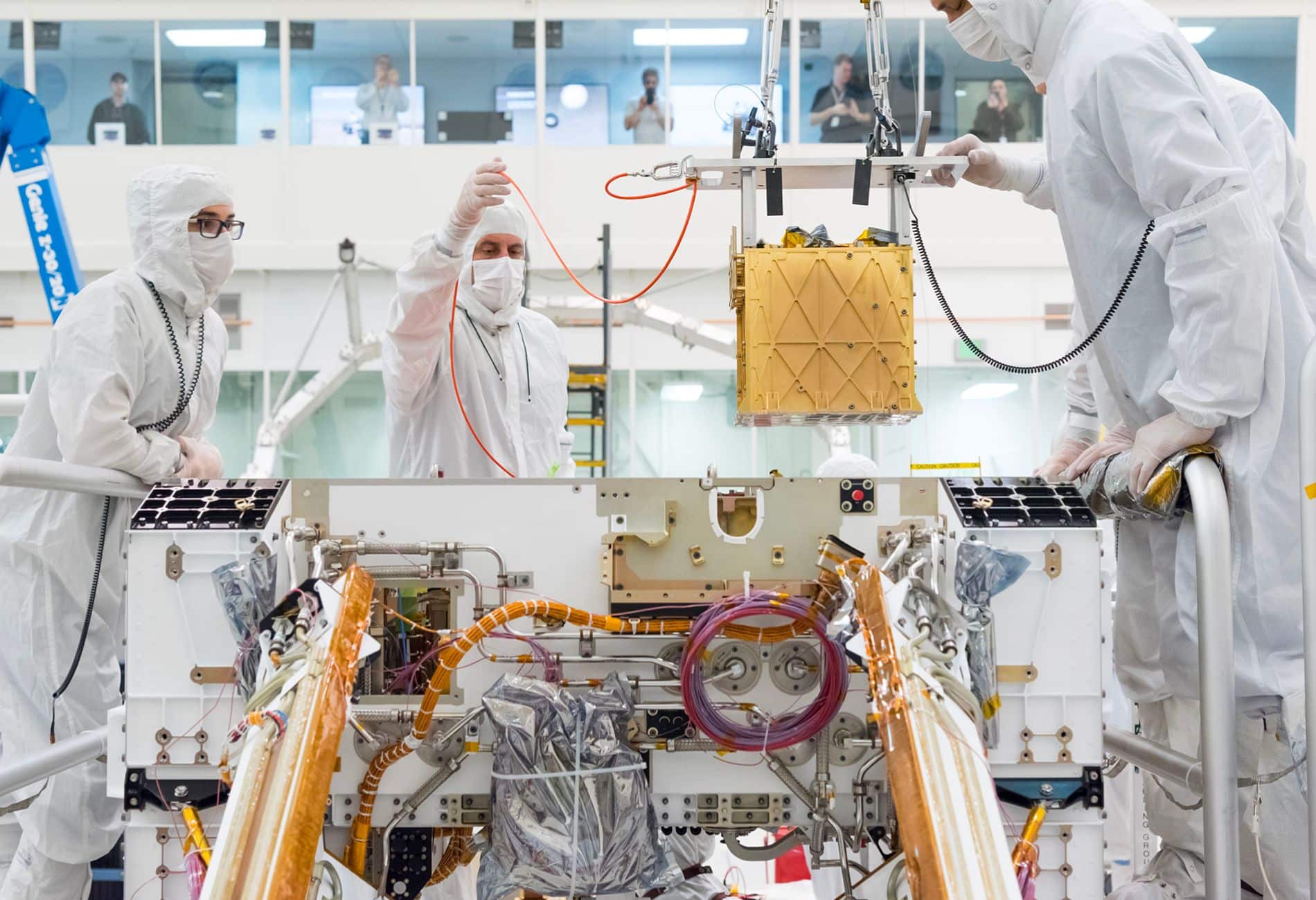The device recently demonstrated for the 16th (and final) time that it is possible to produce oxygen on the Red Planet. An achievement that promises to make the lives of future travelers to Mars more enjoyable.
Aboard the Perseverance spacecraft, which landed on Mars in 2021, is a small machine — not much bigger than a microwave — with big ambitions. We’re talking about MOXIE, which is short for Experiment with using Mars’ oxygen resources on site. With this device, NASA scientists hope to prove that it is possible to produce oxygen on Mars, thus bringing manned missions to the Red Planet a little closer.
Oxygen
As you read this article, you have already inhaled oxygen several times. In your lungs, this oxygen is delivered to your blood, and the blood then delivers the oxygen to your muscles and organs. It’s a crucial process: without oxygen your muscles and organs cannot function. Fortunately, Earth’s atmosphere is rich in oxygen, so you can eat it all day long. But on Mars things are different. Mars’ atmosphere consists of 96% carbon dioxide. So anyone who wants to travel to Mars would have to take oxygen with them or generate it on site. NASA likes to focus on the latter. Especially since huge amounts of oxygen are also needed to return to Earth some time after arriving on Mars, and therefore you shouldn’t die on Mars (more on that later). But is it really possible to produce oxygen on Mars? MOXIE was developed to find out.
Making oxygen on Mars: check!
This device has now shown that it is indeed possible to produce oxygen on Mars. The first time this worked was in April 2021. Then Moxie wrote history: For the first time, oxygen was made on a planet other than Earth. In recent months, MOXIE has pulled off the trick fifteen more times, NASA has now announced. A total of 122 grams of oxygen were generated. Just to give you an idea: This is enough to supply a small dog with oxygen for 10 hours.
This has now conclusively proven that it is possible to produce oxygen on Mars. This is also why NASA decided to draw a line under it and end the experiment. scientists are satisfied; MOXIE has performed beyond expectations. Moreover, they were able to test the device at different times and thus under different conditions over the course of a single Martian year. This has provided a wealth of information and reinforced NASA’s belief that with a little help from a (larger) successor to MOXIE, it will be possible to provide oxygen to travelers to Mars.
Breathe and travel back
Thanks to Moxie’s preparatory work, future travelers to Mars can breathe a sigh of relief when they arrive on the Red Planet. But not only that. By producing oxygen on the Red Planet, it is also easier to return to Earth, so travelers to Mars are not doomed to die on the Red Planet (see box).
Oxygen and rockets
To propel a rocket in the vacuum of space, you need oxygen in addition to fuel. You should also take oxygen with you on the long journey to Mars. This is not a problem, because as we mentioned, there are a lot of them on Earth. But anyone who wants to return to Earth from Mars also needs oxygen. Theoretically, you could take so much oxygen with you from Earth that you would also have enough for the way back, but this is not very attractive, because in practice, this makes your spacecraft larger and therefore heavier (in fact very heavy). In order to make a return to Earth possible – and thus not die on Mars – you must be able to produce oxygen on Mars.
MOXIE now shows that it is possible to generate oxygen on the Red Planet. But how exactly does that work? In fact, the device extracts oxygen from Mars’ carbon dioxide-rich atmosphere. Moxy absorbs carbon dioxide (CO2). This carbon dioxide consists of a carbon atom (C) and two oxygen atoms (O2). After absorbing carbon dioxide, MOXIE removes one oxygen atom from each carbon dioxide molecule. Thus – atom by atom – oxygen is extracted from Mars’ carbon dioxide-rich atmosphere.
next step
A total of 122 grams of oxygen were generated. For a demonstration mission – such as MOXIE’s – it is very impressive. But this, of course, is not nearly enough to provide a multi-person crew with enough oxygen to breathe and return to Earth. Scientists realize this too. And they want to work on a bigger, more efficient successor – also based on what they’ve learned about the technology thanks to MOXIE. This won’t just be a bigger version of MOXIE. No, future studies will focus directly on a device that could not only efficiently generate oxygen on Mars, but also liquefy the oxygen and then store it in large quantities.
If this works, the path to manned missions to Mars is not yet clear. Because, as NASA emphasizes, there are still more problems that need to be solved before people can travel to Mars. Some of these require technologies that – like MOXIE – actually need to be tested on site first. At the moment, there is no breathing or launching from Mars. But reassuringly, we now know that our dependence on oxygen does not appear to be an obstacle to our most ambitious space plans.









